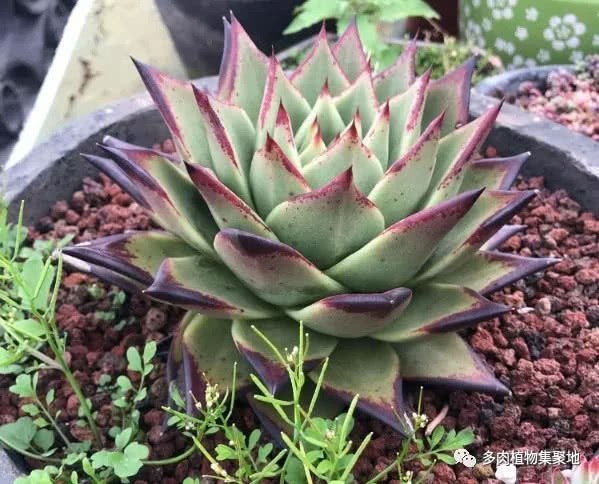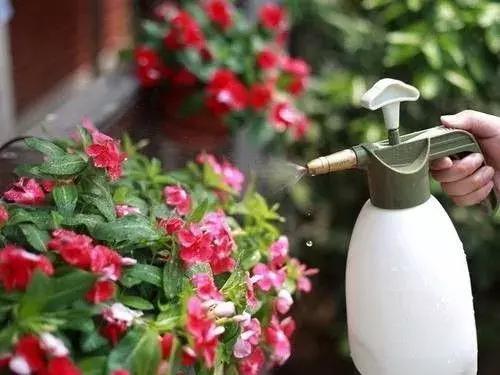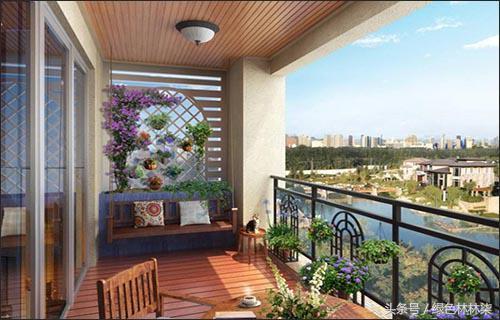Want to sow succulent plants at home? Here's the trick.

When do succulents sow? In fact, when to sow succulent plants can not be divided simply by month and season, because China has a vast territory, the climate difference between north and south is large, and the degree of artificial intervention in the sowing environment is large, generally according to the local climate temperature to decide the sowing time. Many flower friends buy succulent plant seeds in a hurry to sow, seeds scattered a month do not germinate to give up, do not consider the seed sowing temperature at all.
Before sowing succulent plants, the soil should be saturated with water and kept moist at all times. The best way is to use a set basin. The tray below can hold water. Do not cut off water. Air humidity is maintained by transparent covers or plastic wrap. The lid needs to have several vents and not be completely closed. After most seeds germinate, remove the lid.
Some people sowed Crassulaceae seeds at more than 30 degrees. Sowing at inappropriate temperatures often resulted in low germination rate or no germination at all. 10-25 The temperature is more appropriate and requires a certain temperature difference between day and night. Humidity: Higher soil moisture and air humidity are required. Do you want to drain the tray after the meaty seeding? If yours is a seed, you need it. If it's grown, you don't need it.
Time: Take the common pseudo-stone lotus genus, thick leaf grass genus, windmill grass genus and fairy cup genus of Crassulaceae as an example. Generally, those that can be produced in 3 days-2 weeks are all out. Other genera have not been sown, and some take longer. Sufficient scattered light is required, not direct light, not total darkness. Scatter light before germination, then gradually transition to natural direct light, shade in summer. Young seedlings were not afraid of disciples. As long as they were alive, they could recover, but there was nothing they could do if they died in the sun.
The next problem was the transfer of succulent plants. Generally, after a pair of cotyledons had been expanded, they could be transferred for the first time. At this time, they had not taken root yet, so it was not easy to transfer them to death after they were placed properly. After the transfer, a surface is laid, which is good for seedling support and prevention of small black fly. After that, as long as the seedlings were squeezed, they should be moved. Otherwise, the seedlings would compete for nutrients, soil, and light, which would not be beneficial to their growth. After the seedlings were transferred, the spacing between the seedlings should not be too large. A finger width spacing would be good. Proper competition is also beneficial. And then grow up can move the tray single room.
To expand knowledge, succulent plant cultivation points: culture soil requirements of loose soil permeability, good drainage, but a certain ability to retain water, neutral or slightly acidic. Highland balls (Luna, Luna, Euphorbia) and rock peony can add a little bit of chaff ash and small weathered rock. Tall columnar species may be mixed with large grains of quartz sand to anchor plants.
This is a gathering place for succulent plant lovers to share succulent conservation skills. Welcome to pay attention to communication.
- Prev

Flowers and plants are healthier with a small action (especially in autumn).
Many flower lovers know that spraying water on plants correctly can not only clean leaves, but also promote healthy growth. It's just that most beginners don't know that improper water spraying can easily cause plant problems. The benefits of growing flowers and spraying water. Foliar spray can.
- Next

If you were given a house of 90 square meters, what would it look like?
If you were given a house of 90 square meters now, what would you make it look like? Chen Shuang and her husband Yang Dazhi like to play with flowers and plants, and they began to build their own private garden three years ago. Although the area of the home is only 90 square meters.
Related
- Wuhan Hospital Iron Tree Blooming Result Was Instantly Frightened by the Gardener Master
- Which variety of camellia is the most fragrant and best? Which one do you like best?
- What is the small blue coat, the breeding methods and matters needing attention of the succulent plant
- Dormancy time and maintenance management of succulent plants during dormancy
- Minas succulent how to raise, Minas succulent plant pictures
- What are the varieties of winter succulent plants
- How to raise succulent plants in twelve rolls? let's take a look at some experience of breeding twelve rolls.
- Attention should be paid to water control for succulent plants during dormant period (winter and summer)
- Watering experience of twelve rolls of succulent plants
- Techniques for fertilizing succulent plants. An article will let you know how to fertilize succulent plants.

